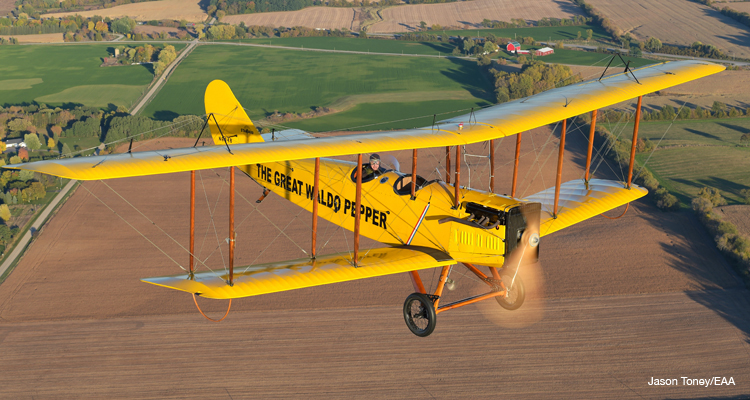The square-cut 1916-18 Standard J-1 biplane is notorious for being mistaken as a Curtiss JN-4 Jenny, a situation not helped by the fact that the Jenny is frequently referred to as the Curtiss Standard. In the case of the J-1, Standard was the name of one of the four companies that manufactured the gawky airplane for the U.S. Army Air Service, while the Curtiss Standard name came from the fact that the Jenny was the standard American World War I–era basic trainer.
The Experimental Aircraft Association has owned a Standard J-1 for some 40 years, warehoused without wings or engine for a time, then restored but left on static display at the EAA Museum in Oshkosh, Wis. Time had its way with the wood and fabric, and in 2011 the EAA’s J-1 needed another restoration—completed in September 2013. But the J-1’s first flight didn’t take place until last October, when it took off in stately fashion, its vast wings as full of lift as a roomful of Wonderbras, from a grass runway at Oshkosh’s Wittman Field. (That flight may be viewed on YouTube.)
The EAA’s Standard carries a Hispano-Suiza 8A V-8, giving it 60 hp more than the equivalent 90-hp OX-5 Jenny. J-1s originally had famously vibratory and incendiary 4-cylinder Hall-Scott A-7a engines putting out 100 hp, but that power plant was so unreliable that all J-1s were grounded in 1918 until they were re-engined.
The EAA airplane is painted in the yellow and black of fictional barnstormer Waldo Pepper, though the real movie plane is in the Historic Aircraft Restoration Museum, in suburban St. Louis. But to see the best-ever actual J-1 flying footage—as well as Jennies, a Spad, a Fokker Triplane and a Bücker Jungmeister—stream The Great Waldo Pepper from Netflix or Amazon. An oft-neglected Robert Redford film produced, directed and co-written by former U.S. Marine Corps pilot George Roy Hill, with flying sequences by Frank Tallman and a brave collection of stunt aviators, it has some of the finest aerial footage ever shot—an evocative reminder of the days before close-but-no-cigar computer-generated imagery.





